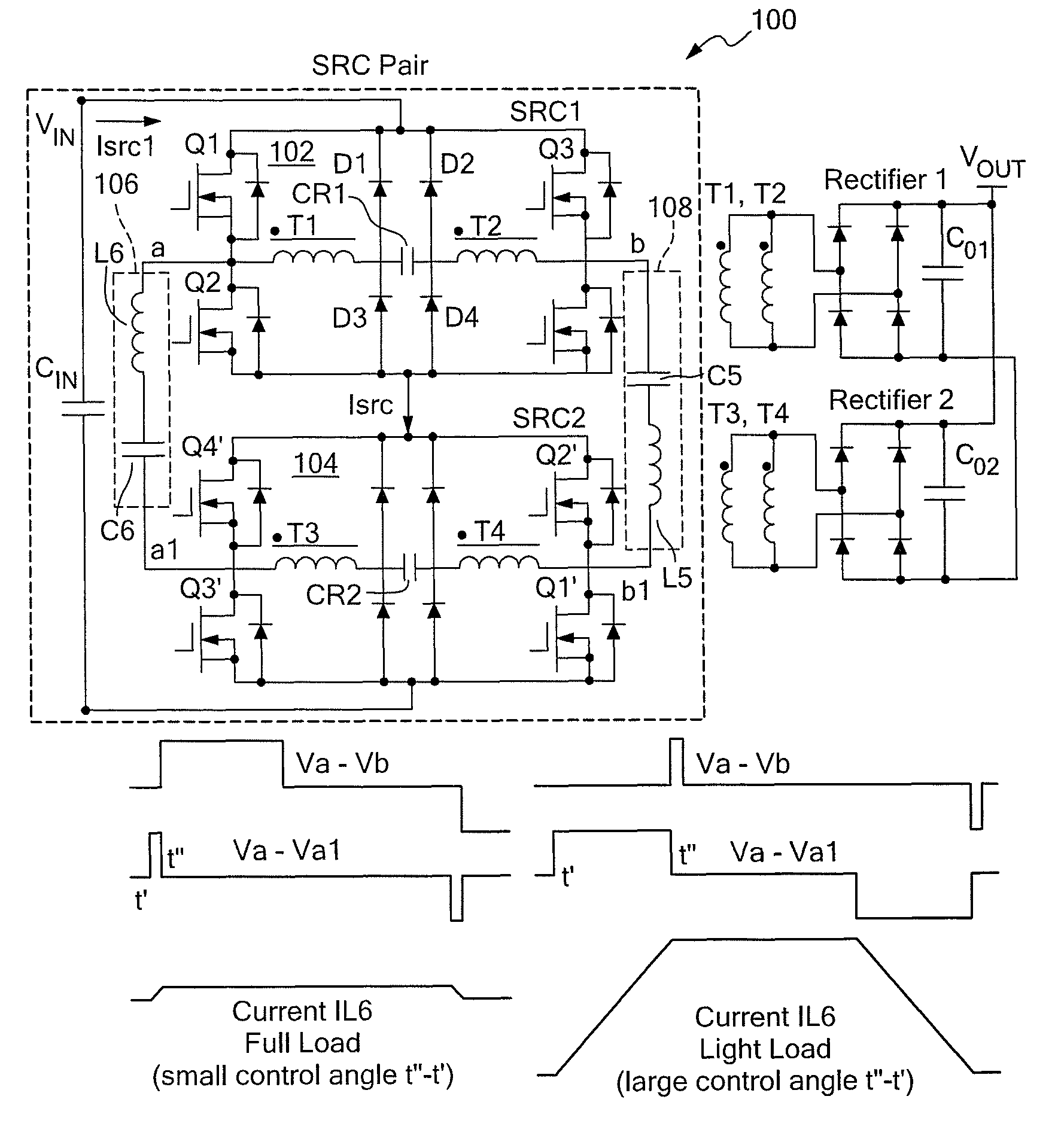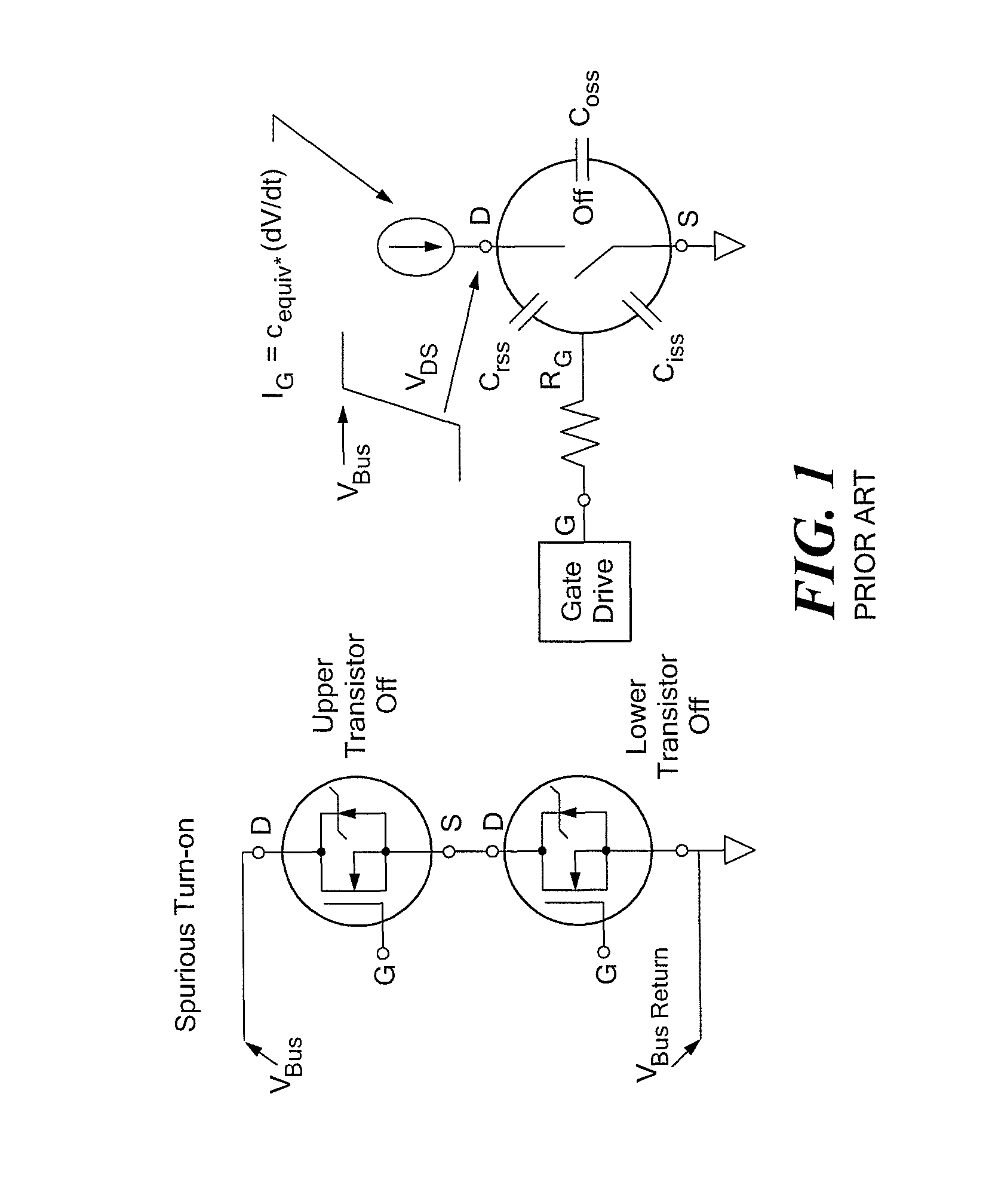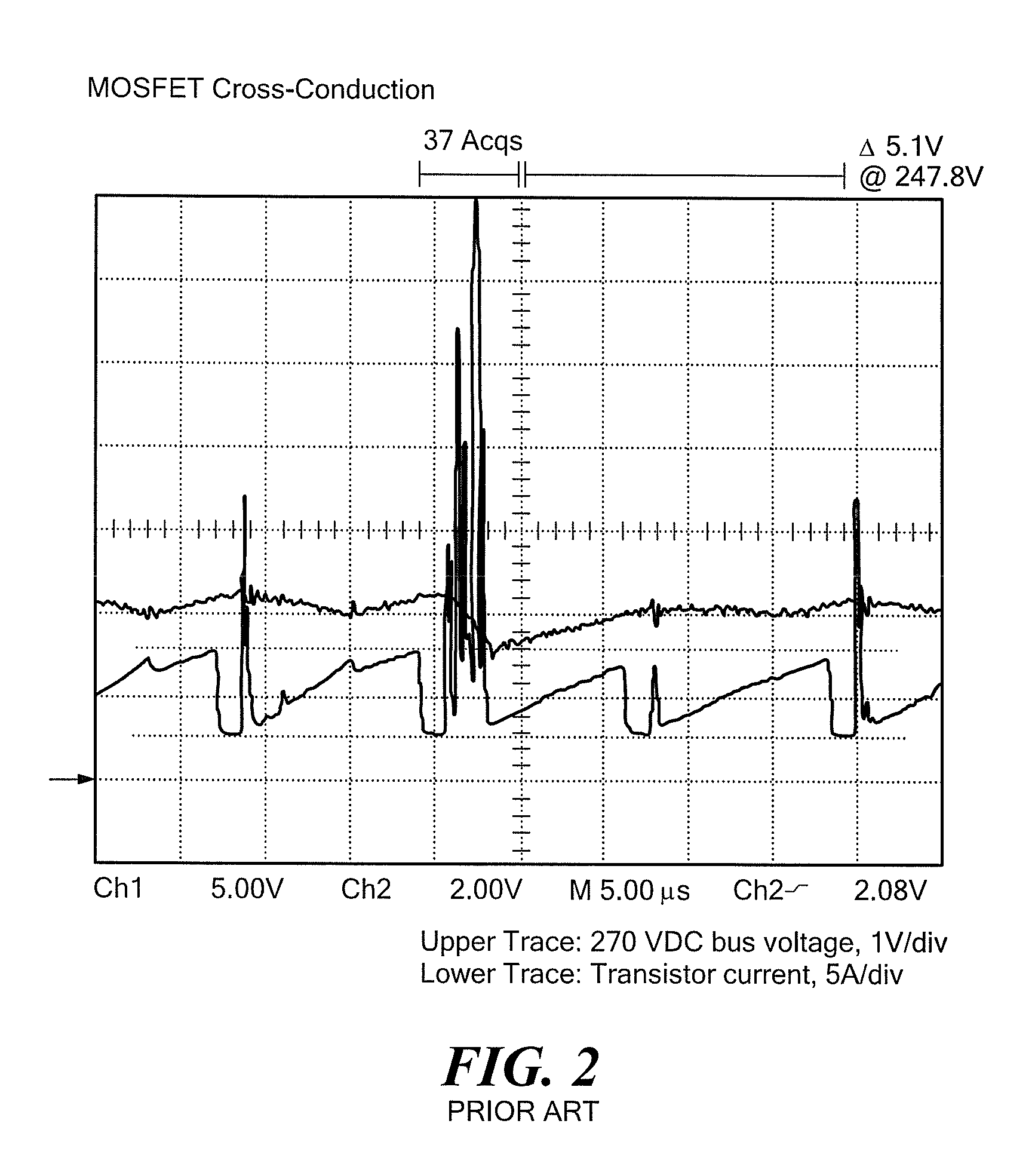Methods and apparatus for a cascade converter using series resonant cells with zero voltage switching
a series resonant cell and cascade converter technology, applied in the direction of electric variable regulation, process and machine control, instruments, etc., can solve the problems of complex control required for capacitor balancing, voltage imbalance between series-connected dc bus capacitors, and inability to achieve the effect of balancing the capacitors,
- Summary
- Abstract
- Description
- Claims
- Application Information
AI Technical Summary
Benefits of technology
Problems solved by technology
Method used
Image
Examples
Embodiment Construction
[0048]In one aspect, the invention provides a high power DC / DC conversion topology operating from a single high voltage (HV) source using a building block comprising a dual series resonant converter (SRC) with clamped capacitor voltage. Exemplary embodiments include a power topology using multiple power stages with Zero-Voltage Switching (ZVS) operation at any practical load. This topology also ensures equal input voltage and power sharing between individual converters. The inventive power cell provides enhanced reliability and efficiency compared with conventional circuits. In one embodiment, the invention builds on and improves the ZVS topology described in the commonly assigned, related, and incorporated-by-reference U.S. Pat. Nos. 6,873,138 6,873,139.
[0049]FIG. 3A shows an exemplary dual SRC power cell 100 in accordance with exemplary embodiments of the invention. The power cell 100 has ZVS under all, or substantially all, expected load and line conditions thereby reducing switc...
PUM
 Login to View More
Login to View More Abstract
Description
Claims
Application Information
 Login to View More
Login to View More - R&D
- Intellectual Property
- Life Sciences
- Materials
- Tech Scout
- Unparalleled Data Quality
- Higher Quality Content
- 60% Fewer Hallucinations
Browse by: Latest US Patents, China's latest patents, Technical Efficacy Thesaurus, Application Domain, Technology Topic, Popular Technical Reports.
© 2025 PatSnap. All rights reserved.Legal|Privacy policy|Modern Slavery Act Transparency Statement|Sitemap|About US| Contact US: help@patsnap.com



